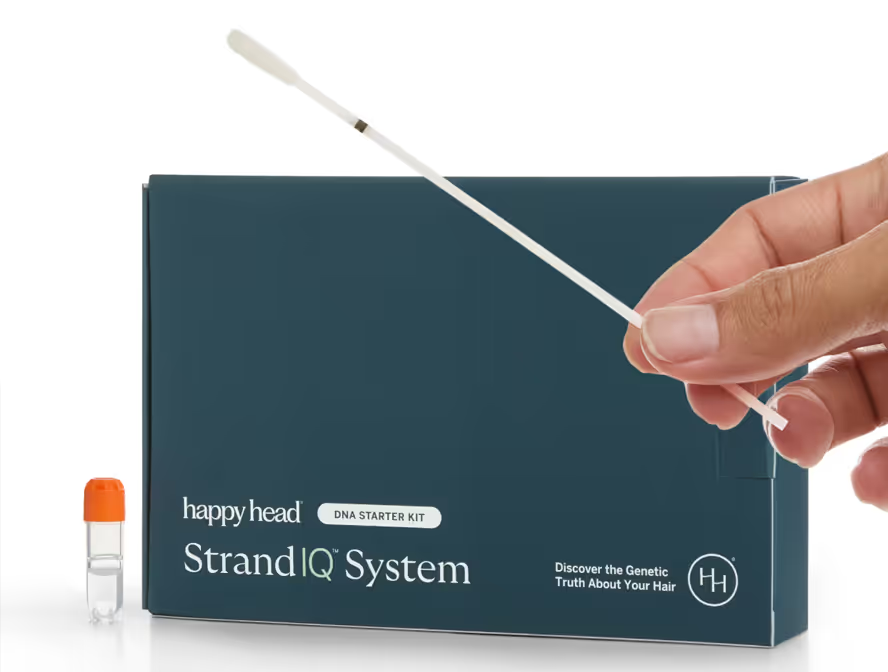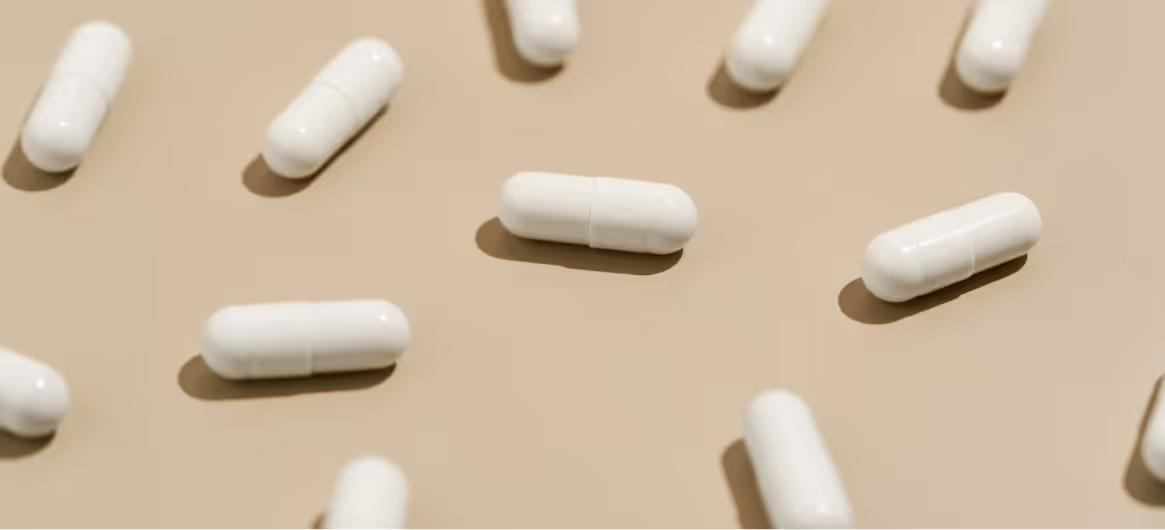Does your hair feel rough, dull, or prone to breakage no matter how often you condition? You could be dealing with dry hair, a common concern that affects men and women of all ages. From environmental damage to genetic predispositions, dry hair often signals that your hair’s protective outer layer is compromised.
Fortunately, once you understand what’s contributing to your dryness, you can take steps to improve your hair’s moisture levels, softness, and strength. Let’s explore the causes, genetic components, and smart ways to bring hydration back to your strands—tailored by risk level.
What Causes Dry Hair?
Dry hair happens when your hair doesn’t retain enough moisture, often due to a damaged outer layer (the cuticle). When the cuticle is intact and healthy, it lays flat and protects the inner hair shaft, keeping hydration locked in. But when it’s compromised—due to heat, chemicals, overwashing, or environmental exposure—your hair loses its ability to hold onto moisture. That leads to brittleness, dullness, and split ends.
Some common causes of dry hair include:
- Environmental exposure (e.g. sun, wind, dry climates)
- Overwashing or using harsh shampoos
- Heat styling or chemical processing
- Swimming in chlorinated or saltwater pools
- Genetic predisposition affecting keratin structure
Is Dry Hair Genetic?
Yes—your genes play a role in how resilient your hair is. Variants in several keratin genes, including KRT71, KRT74, and KRT25, are linked to hair structure and hydration. These keratins help build and maintain your hair’s cuticle layer. When genetic variations affect how these proteins are produced or function, your hair may be more prone to dryness and breakage.
While you can’t change your DNA, knowing your risk can help you take more proactive care of your hair’s moisture barrier.
Low-Risk: Keep Your Hair’s Natural Oils in Balance
If your Happy Head StrandIQ™ analysis has identified you as having a low genetic risk for hair dryness, you can often maintain healthy hydration by protecting your hair’s natural oil balance. Follow these tips to help keep your locks looking their best:
- Avoid overwashing
Shampooing too often strips natural oils. Start by washing just two to three times per week with a gentle shampoo. - Be cautious in dry environments
UV rays, dry air, and strong winds can dehydrate hair. Use hats or silk scarves for protection. - Limit harsh treatments
Frequent dyeing, bleaching, and chemical straightening break down the hair’s protective outer layer.
Medium-Risk: Nourish and Moisturize
If your hair is starting to show signs of dryness—or if you have a moderate genetic risk for dry hair—it’s time to step up your care routine:
- Wash less, moisturize more
Switch to sulfate-free, moisturizing shampoos and wash less frequently. - Stay-on conditioners
Apply a leave-in or overnight conditioner to restore softness and seal in moisture. - Weekly masks
Use a deep conditioning mask once a week with ingredients like argan oil, keratin, or shea butter. - Watch the heat
Dial down the heat on your hair dryer or let your hair air dry when possible.
High-Risk: Advanced Hair Hydration Strategies for Persistent Dryness
If your hair constantly feels dry or brittle despite using gentle products and moisturizing treatments, you may need to take more intensive steps to restore and protect hydration—especially if your genetics or lifestyle put you at a high risk for dryness.
Here are elevated recommendations tailored to high-risk individuals:
- Consider a pre-shampoo oil treatment
Apply nourishing oils like coconut, argan, or jojoba to dry hair before washing to create a moisture-sealing barrier and prevent protein loss. - Install a shower filter
Hard water and chlorine can strip natural oils from your scalp and hair. A showerhead filter can help reduce mineral buildup and dryness. - Consult a dermatologist
If dryness is persistent or paired with hair loss or scalp irritation, a specialist can assess for underlying conditions like eczema, seborrheic dermatitis, or nutritional deficiencies. - Opt for hydrating in-salon treatments
Professional-grade moisture or protein masks (like Olaplex, K18, or keratin-based services) can help replenish moisture levels more effectively than at-home products. - Protect hair from environmental extremes
Wear protective styles and cover your hair when exposed to high UV rays, wind, or dry indoor heating. Consider using humidifiers in dry climates to help preserve scalp hydration.
Your Hair Hydration Game Plan
Managing dry hair isn’t just about using more conditioner—it’s about understanding your hair’s unique biology and giving it what it needs to stay healthy, hydrated, and resilient. At Happy Head, we believe that the best hair care is personalized, proactive, and rooted in science. That’s why we offer custom hair care solutions tailored to your genetic risk factors, lifestyle, and goals.
Whether you're looking for lightweight hydration, intensive repair, or protection from environmental stressors, Happy Head's dermatologist-developed treatments are built to support your hair from the inside out. From targeted scalp serums to prescription-strength options, we help you create a plan that actually works—for your strands and your story.
Resources
StrandIQ SNP Marker Count: 8
StrandIQ Genes for Trait:
ASL, ERCC8, GJA1, KRT25, KRT71, KRT74, RNU4-35P, WNT10A
References:
Adaimy, L., et al. (2007). Mutation in WNT10A is associated with an autosomal recessive ectodermal dysplasia: the odonto-onycho-dermal dysplasia. American Journal of Human Genetics, 81(4), 821–828. PMID: 17847007.
Ahmed, A., et al. (2019). Genetic hair disorders: a review. Dermatology and Therapy (Heidelberg), 9(3), 421–448. PMID: 31332722.
Ansar, M., et al. (2015). A homozygous missense variant in type I keratin KRT25 causes autosomal recessive woolly hair. Journal of Medical Genetics, 52(10), 676–680. PMID: 26160856.
Basit, S., et al. (2015). Genetics of human isolated hereditary hair loss disorders. Clinical Genetics, 88(3), 203–212. PMID: 25350920.
Fujimoto, A., et al. (2012). A missense mutation within the helix initiation motif of the keratin K71 gene underlies autosomal dominant woolly hair/hypotrichosis. Journal of Investigative Dermatology, 132(10), 2342–2349. PMID: 22592156.
Rouillard, A.D., et al. (2016). The Harmonizome: a collection of processed datasets gathered to serve and mine knowledge about genes and proteins. Nucleic Acids Research, 44(D1), D605–D610. PMID: 26637968.
Shimomura, Y., et al. (2010). Autosomal-dominant woolly hair resulting from disruption of keratin 74 (KRT74), a potential determinant of human hair texture. American Journal of Human Genetics, 86(4), 632–638. PMID: 20346438.
Wasif, N., et al. (2011). Novel mutations in the keratin-74 (KRT74) gene underlie autosomal dominant woolly hair/hypotrichosis in Pakistani families. Human Genetics, 129(4), 419–424. PMID: 21188418.
This content, including StrandIQ™ DNA analysis reports and any Happy Head products and/or services referenced therein, is for informational and cosmetic purposes only. It is not intended to diagnose, treat, cure, or prevent any disease. This content does not constitute medical advice and should not be used to make healthcare decisions. References to prescription treatments are educational in nature. Always consult a licensed healthcare professional for any medical concerns or treatment decisions.








.avif)

